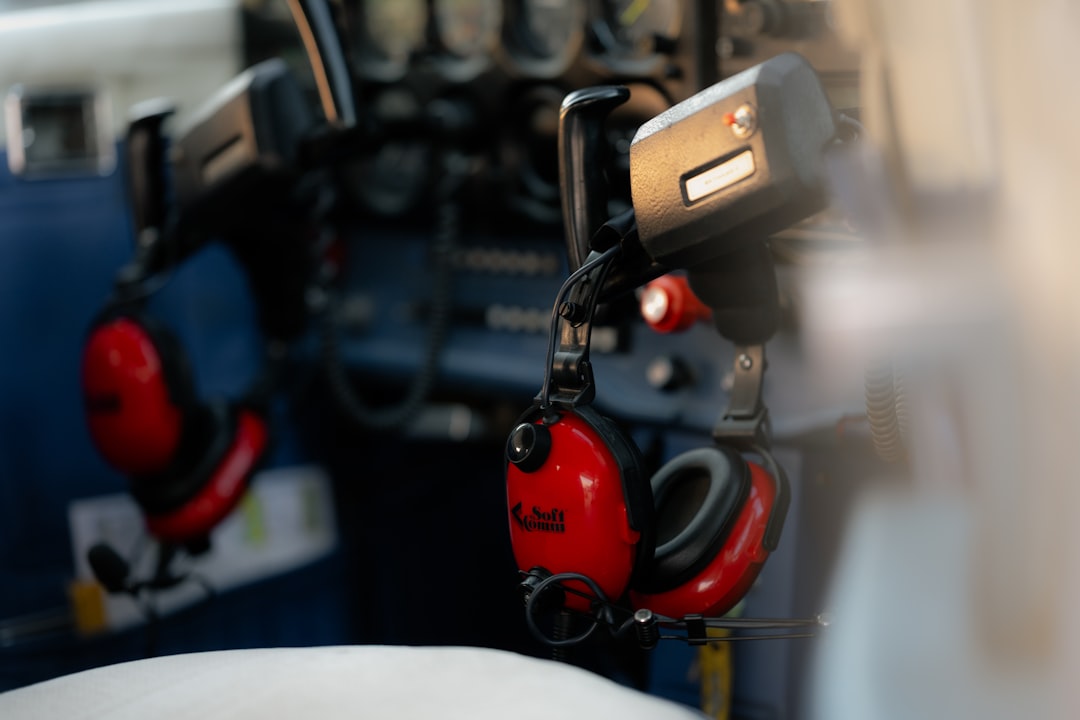

Engage prospects with a scan and streamline customer engagement with FREE QR code marketing tools by Sona – no strings attached!
Create a Free QR CodeFree consultation

No commitment

Engage prospects with a scan and streamline customer engagement with FREE QR code marketing tools by Sona – no strings attached!
Create a Free QR CodeFree consultation

No commitment
The demand for efficient, technology-driven solutions in driver training equipment suppliers is accelerating as training organizations, fleet operators, and educational institutions seek new ways to modernize and elevate driver education. However, many suppliers face a persistent gap between hands-on training and capturing actionable digital insights, a disconnect that can leave high-value trainee behaviors and compliance data offline or untracked.
QR codes have emerged as a way to bridge this gap, enabling suppliers and trainers to streamline processes long bogged down by paper manuals, missed engagement signals, or reliance on in-person follow-ups. For organizations losing track of trainees who deviate from set routines or struggle to provide just-in-time guidance, QR technology offers instant access to up-to-date instructions, training modules, and support materials at the point of need. This results in faster setup, richer data collection, and more context-aware learner experiences, addressing the frustration of missed follow-ups or lost operational efficiencies.
By embedding QR code solutions into everyday touchpoints such as equipment consoles, safety gear using durable QR codes, and on-site signage, driver training equipment suppliers can convert passive interactions into measurable data streams. This guide explains how to leverage QR codes to improve compliance and ROI, reclaim missed training opportunities, strengthen personalization, and resolve data blind spots that have traditionally limited program value.

Connecting physical training with robust data collection remains a central challenge for suppliers. Without digital touchpoints, mission-critical moments such as a trainee reviewing advanced maneuvers or an instructor logging a maintenance issue often go untracked. QR codes change this reality by turning every piece of training hardware into an actionable gateway to content, support, and analytics.
Start by mapping the offline journey of your trainees and instructors. Identify the moments where a scan could replace paper binder lookups, where a guided video could reduce instructor intervention, or where a digital log could eliminate the friction of manual data entry. Then assign QR codes to those moments so every interaction is trackable and every learner has instant access to the right resource.
Training providers who struggle with lost paper logs or incomplete session records can assign QR codes to individual simulators and helmets. With each scan, a real-time dashboard updates, flagging trainees who show high intent and surfacing the training assets most in demand, so teams can follow up without relying on manual notes or memory.

Physical-to-digital disconnect is a daily pain point for many driver training suppliers. People interact with your equipment and materials, yet their intent remains invisible. QR codes supply a simple, fast, and measurable way to close that gap. Instead of hoping trainees read a manual or remember an instructor’s guidance, a clearly labeled code invites immediate action, records it, and returns insights to your team.
This is important because driver training environments are complex and high stakes. Safety, compliance, asset utilization, and trainee outcomes all depend on consistent access to the right information at the right time. QR codes ensure those interactions happen without friction and that each touchpoint becomes data you can use to improve outcomes and prove ROI.
Place QR codes in vehicle cabs and connect them to maintenance logs or safety walk-throughs so techs and trainees can submit documentation from the field. This closes longstanding visibility gaps and ties offline activity to digital oversight in ways that are easy for teams to adopt.
Different formats suit different goals, and in driver training environments, the right match accelerates adoption and insight collection. Focus on formats that minimize friction for trainees and instructors and give your operations team robust data signals.
Start with dynamic QR codes whenever you need the ability to update destinations or capture analytics. Use static codes for evergreen resources such as a fixed asset registry or a universal safety baseline, but do so knowing that static links cannot be changed later and will not deliver the same level of data fidelity.

Growth often stalls because offline attribution remains anonymous. The candidate who spent thirty minutes testing a simulator at your booth or the trainee who revisits advanced modules during off-hours rarely shows up as a tracked lead without a deliberate mechanism. QR codes give you that mechanism and help you turn scattered moments into measurable demand.
Look for placements where users already pause or seek guidance, then turn those moments into digital entry points. These are natural places to capture intent, accelerate support, and surface upsell paths.
Pair these placements with advanced analytics to spot which accounts push into advanced features, request specialized guidance, or display adoption signals. Then, coordinate your sales and customer success teams to deliver timely offers and relevant post-training services.

The right use cases create immediate value for both learners and operators. In practice, these QR-enabled moments improve safety, accelerate training, and make compliance reporting easier. They also produce the behavioral data needed to optimize the program over time.
These use cases work because they make the right digital action easy at the exact moment it is most relevant. The result is higher engagement, fewer errors, and better readiness for audits or recertification reviews.
Each scan is a signal. It tells you what someone was doing, which asset they were using, where they were, and often why they engaged. With thoughtful deployment, you can turn those signals into segmented audiences that fuel remarketing and personalized follow-up across your channels with intent-driven retargeting.
Begin by assigning unique QR codes to distinct contexts such as awareness events, on-equipment training, and post-purchase support. Tag each code with metadata that identifies the asset, location, and desired action. When scan data flows into your CRM or customer data platform, you can build audiences that match real behavior instead of guesses.
In this industry, it helps to distinguish among trainees, instructors, fleet managers, school administrators, and procurement officers. Trainees often scan for content and support, while administrators and buyers scan for pricing, compliance, and integration information. Use role-specific landing pages and automation to match these divergent needs and increase conversion rates.
QR codes connect your physical presence to your digital ecosystem, producing attribution and engagement signals that traditional offline channels cannot deliver, and see industry adoption across sectors. Instead of treating brochures, events, and signage as isolated efforts, use QR touchpoints to unify them into a single measurable funnel.
Choose five to six channels that best match your go-to-market motion and embed QR codes with clear calls to action. Then use a centralized platform to manage codes, measure performance, and adjust campaigns in real time based on actual scan behavior.
QR codes serve as the offline onramp to your digital marketing engine. With a platform like Sona QR, you can manage destinations, monitor results by channel and asset, and sync scan data with your CRM so your campaigns stay connected end to end.
Start by defining a single, concrete problem to solve. For driver training suppliers, high-impact goals include improving compliance record completion, reducing support response time, and increasing demo requests from live events. Focus creates clarity about where to place codes, what the call to action should be, and how success will be measured.
Document the target outcome and the audience. For example, “Increase completion of pre-trip inspection forms by 25 percent among new trainees within 60 days.” When the use case and outcome are explicit, you can structure landing pages, forms, and automation to deliver that outcome rather than a generic experience.
Dynamic QR codes are ideal for most training scenarios. You can update destinations without reprinting labels, add tracking parameters for attribution, and enable features like device-aware routing or A/B testing of content. Static codes are suitable for universal resources that never change, such as a fixed safety baseline or a permanent asset registry record.
Consider the lifecycle of your content. If you anticipate revisions to manuals, updates to video lessons, or seasonal promotions, dynamic codes provide long-term flexibility and reliable analytics. They also integrate cleanly with platforms like Sona QR, which centralize management and reporting across hundreds of assets.
Design for scannability and clarity. Make the code size appropriate for the scanning distance, include a high-contrast frame, and add your logo for brand trust. Place a short, action-oriented CTA directly beside the code, such as “Scan for Advanced Maneuvers” or “Scan to Log Pre-Trip Inspection.” A clear expectation increases scan rates and reduces confusion.
Test in real conditions. Scan on multiple devices in varied lighting at the actual placement angle, whether on a dashboard, a wall, or a moving vehicle at a trade show. Confirm the landing page loads quickly on cellular connections and that the content is optimized for mobile. Run a brief pilot with instructors to collect feedback before scaling deployment.
Roll out your codes where they will remove the most friction. Common high-yield placements include simulator dashboards, cab interiors near the steering column, headset cases, classroom posters, depot gates, and event signage. Where possible, align placement with a natural pause point so scanning fits the flow of the task rather than interrupting it.
Coordinate messaging across placements so the experience feels cohesive. For example, a brochure might drive to a model comparison, while the simulator code drives to an advanced drill for that model, and the depot gate code launches a compliance checklist. Consistency reduces cognitive load and helps trainees and decision-makers connect the dots across contexts.
Tracking is where QR codes become transformative. Use dashboards in Sona QR to monitor scan volume by asset and location, view engagement by time of day, and measure conversions such as form submissions or training completions. Evaluate which placements and calls to action perform best, then redeploy resources accordingly.
Iterate quickly. Refresh content that underperforms, A/B test landing pages and CTAs, and use scan data to inform staffing and equipment allocation. Feed signal data into your CRM so sales and success teams can act on high-intent behaviors, such as repeated engagement with advanced features or support resources.

Attribution is the leap from engagement to impact. Scans alone are helpful, but suppliers need to know how QR interactions influence pipeline, adoption, and retention. Modern analytics close that loop by linking offline scans to online conversions and CRM records so you can prove ROI and improve decision-making.
With Sona QR and Sona.com, you can track every scan with granular context, analyze performance by channel, and connect engagement to revenue outcomes. This unified view lets you optimize while campaigns are running and align teams around the same data.
The result is a clear line from scan to impact. Teams can move beyond anecdote and invest in the content, placements, and offers that deliver measurable outcomes.
Success depends on execution. The most effective programs make scanning effortless, segment audiences wisely, and automate follow-up to keep momentum alive. Focus on a few best practices, then layer in creative placements and data discipline.
Creative deployments can give your program a lift. Consider codes on traffic cones that launch drill instructions for range exercises or codes on invoices that open a one-tap reordering page for consumables and wear parts. These placements meet users exactly where the need arises and turn routine tasks into trackable actions.
Leading driver training equipment suppliers are closing gaps such as lost training signals, anonymous engagement, and inefficient manual processes by transforming every equipment touchpoint into a digital opportunity. Thoughtful QR code deployment and tracking empower organizations to capture value where it is most at risk of being missed. This evolution is not only about technology, it is about building a responsive training ecosystem that adapts to learner needs and operational realities in real time.
By strategically embedding QR codes across assets, marketing collateral, and trainee interactions, suppliers gain a level of operational visibility that was previously out of reach. Every scan can unlock a relevant resource, create an audit-ready record, or trigger a personalized follow-up. With platforms like Sona QR for code management and Sona.com for attribution, you can connect scans to revenue and make QR programs a measurable pillar of your growth strategy. Start creating QR codes for free.
QR codes have transformed driver training equipment suppliers from static product catalogs into dynamic, interactive engagement tools. By enabling instant access to instructional videos, maintenance guides, and real-time updates, QR codes enhance learner experiences and streamline equipment support. Imagine trainers and students effortlessly scanning codes to unlock tailored content that accelerates skill development and reduces downtime.
With Sona QR, you can create dynamic, trackable QR codes in seconds that update instantly without reprinting, allowing you to connect every scan to valuable insights on user engagement and equipment usage. This means better customer acquisition, improved training outcomes, and measurable ROI for your business. Start for free with Sona QR today and turn every scan into a seamless learning opportunity and a step toward stronger client relationships.
Essential driver training equipment includes simulators, vehicle cabs, safety gear, and training consoles that can be enhanced with QR codes to provide instant access to manuals, training modules, and support materials.
Integrate advanced equipment by embedding dynamic QR codes on simulators, safety gear, and signage to connect trainees with up-to-date digital content, automate logs and check-ins, and collect actionable data for improved training outcomes.
Reliable suppliers can be found by looking for those who offer technology-driven solutions such as QR code integration, digital content management platforms like Sona QR, and support for operational tracking and analytics.
The latest technologies include durable and dynamic QR codes that link physical equipment to digital manuals, training modules, compliance tracking, real-time analytics dashboards, and automated workflows for maintenance and certification.
Maintain and update equipment by using dynamic QR codes that allow content destinations to be changed without reprinting codes, enabling instant updates to training materials, procedures, and compliance documents while tracking engagement.
Use Sona QR's trackable codes to improve customer acquisition and engagement today.
Create Your FREE Trackable QR Code in SecondsJoin results-focused teams combining Sona Platform automation with advanced Google Ads strategies to scale lead generation

Connect your existing CRM

Free Account Enrichment

No setup fees
No commitment required

Free consultation

Get a custom Google Ads roadmap for your business






Launch campaigns that generate qualified leads in 30 days or less.
